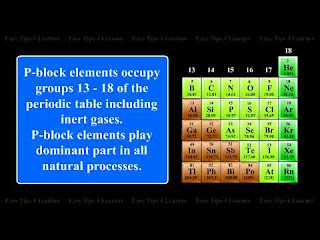Q.1. Which of the following is a tetrabasic acid ?
A) Orthophosphoric acid
B) Hypo phosphorous acid
C) Metaphosphoric acid
D) Pyrophosphoric acid
Explanation-
Pyrophosphoric acid :
(Tetrabasic)
Q.2. When ammonia is passed over heated copper oxide, the metallic copper is obtained, The reaction shows that ammonia is
A) A dehydrating agent
B) An oxidizing agent
C) A reducing agent
D) A nitrating agent
Explanation-
Q.3. Which is the most amphoteric oxide ?
A) NaO
B) MgO
C) AlO
D) CaO
Explanation-
Oxide of aluminum is amphoteric in nature, whereas NaO, MgO and CaO are basic in nature.
Q.4. Which of the following statements is incorrect ?
A) BF is the weakest Lewis acid
B) Ammonal is a mixture of aluminium compounds and is used in bombs
C) BF exists as dimer
D) BCI does not conduct electricity in its molten state
Explanation-
BF exists as dimer.
Q.5. Orthoboric acid contains
A) Pyramidal units
B) Linear units
C) T-shaped units
D) Triangular units
Explanation-
Orthoboric acid contains triangular
units joined together through H-bonding forming a trigonal planar layer structure.
Q.6. Aluminum deposited as vapors on glass forms a good mirror, essentially because
A) It has better shine than Ag
B) It does not scratch
C) Coating is much smoother
D) It does not tarnish in air
Explanation-
Aluminum being passive metal does not tarnish in air.
Q.7. In the electrolytic extraction of aluminum fused cryolite is added
A) To make a conduction solution of bauxite
B) To act as reducing agent
C) To increase Al production
D) To protect the anodes
Explanation-
Addition of cryolite to fused alumina during electrolytic extraction make the solution more conducting and low melting.
Q.8. Which of the metal chlorides has maximum covalent character ?
A) NaCl
B) AlCl
C) CsCl
D) BaCl
Explanation-
has minimum size and maximum charges, hence forms compound with maximum covalent character among given choice. The covalent character of chlorides increases along a period and decreases down a group according of Fajan's rule.
Q.9. When concentrated is heated with
, brown fumes evolve. These fumes are due to
A)
B)
C)
D)
Explanation-
Q.10. Which one of the following elements is most metallic ?
A) P
B) As
C) Sb
D) Bi
Explanation-
Metallic character increases down the group.

